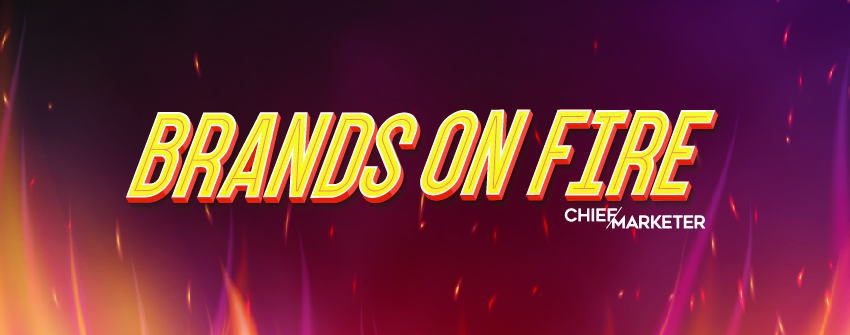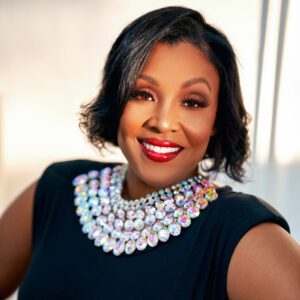Brands on Fire: SheaMoisture CMO Dishes on ‘Black Men Love’ Digital Content Series

SheaMoisture’s new campaign “Black Men Love,” which kicked off Sept. 12 with a digital content series depicting personal stories of everyday Black men, aims to reshape how masculinity within the Black male community is portrayed. The vignettes highlight the various ways Black men show love through their roles as fathers, teachers, partners and professionals.
“As you look at the traditional conversation around Black men in the media and commercial landscape, there’s more of a negative or singular stereotype that defines Black men and Black male masculinity,” SheaMoisture CMO Taydra Mitchell told us. “We wanted to take a moment and take a stand in terms of helping to reshape and rejigger that narrative, and redefine how Black male masculinity is portrayed.”
At the same time, the community is increasingly interested in wellness and mental health. “There’s an evolution that’s taking place,” Mitchell said. “And even post-Covid, you’re now starting to see them talk about it differently. You’re starting to see them be more vulnerable and much more open around what masculinity means.”
We spoke with Mitchell about the campaign’s genesis, inspiration, partnerships and experiential components, plus the positive growth trajectory of SheaMoisture Men in recent years.
Chief Marketer: What was the inspiration for the campaign?

Taydra Mitchell, CMO at SheaMoisture: There’s two narratives that have been going on, and we see these narratives coming to an intersection. As you look at the traditional conversation around Black men in the media and commercial landscape, there’s more of a negative or singular stereotype that defines Black men and Black male masculinity. We wanted to take a moment and take a stand in terms of helping to reshape and rejigger that narrative, and redefine how Black male masculinity is portrayed.
Another conversation is, you’re starting to see Black men evolve as they think about their mental health, as they think about self-care, as they think about what wellness means to them. There’s an evolution that’s taking place. And even post-Covid, you’re now starting to see them talk about it differently. You’re starting to see them be more vulnerable and much more open around what masculinity means. So, looking at both of these, the time is now to help proliferate this new narrative that showcases Black men through the lens of love. And that’s what the launch of this campaign is all about.
But it’s also about locking arms with men who are telling these stories. There are a number of partners and people that have been trying to move this narrative along for a while. We want to stand arm-in-arm with the community to drive and amplify this new definition of Black male masculinity.
CM: Did these parallel narratives come about from consumer research or cultural listening?
TM: It’s a lot of social listening, but also looking at what the narrative has been, both pre- and post-George Floyd. George Floyd was this reckoning moment where it was clear that there is a perception and a perspective around Black men, and what’s in people’s minds around what Black male masculinity looks like. That caused us to take pause to say, how can we do something to affect change in terms of how people see and perceive this audience? You don’t have to look very far to understand that there’s a shift that needs to happen.
There was a young African American man very recently—12 years old—who was arrested right outside of his home for taking out the trash. There is a trauma. There’s a hurt. There is a brokenness that comes along with being misunderstood because of the color of your skin. There are statistics that show that if you have a Black man and a white man that are the same build, the same height, the same weight standing next to one another, that there is a perception of a different kind—people are more fearful and think that the Black man will do certain harm or certain danger. You can see from the way that men are treated and the way that things show up from a cultural and societal perspective.
But then it was also tapping into the Black men in our team. I stand as a Black female leader along with Cara Sabin, our CEO, and our Head of Purpose and Partnership, Simone Jordan. But this was not conceived by us. This was conceived by Black men on our team who are living this experience every day: our creative director, the strategist, our digital series director, Dominique DeLeon, consultants and different people who we worked with. We tapped into the Black male perspective to bring this to life. And we’re excited to be able to use our influence to drive it forward.
CM: You’re working with a number of partners on this. How are they significant from a marketing perspective?
TM: We wanted to amplify a number of people who are doing this work, and have been doing this work. Organizations like Black Men Heal and Black Men Smile have been leaning into these conversations around wellness, mental health support, and helping to shift and change the stereotypes around Black men and to celebrate how they see themselves. Some of these organizations have been around for 13 years or so.
Those partnerships were a critical component of the campaign. But they also help us tell the story. We have a digital series where we’re not just talking about how Black men love—we are demonstrating it. You’ll get a chance to see fathers with their daughters. You’ll get a chance to see Black men who are teachers, showing love to their students.
CM: Talk about the experiential components of the campaign.
TM: Another big part of the campaign are the wellness events. We’re creating safe spaces where men can come together and talk about the things in their heart and on their minds, and be vulnerable. We kicked off our campaign in Los Angeles and New York with a flower wall popup event where we handed out 200-plus flowers to men as a showcase and a demonstration of the first show of love. The wellness events will be an extension of that.
You’ll see the wellness events happen in major cities, but we’re also planning to take those events to B- and C-cities. And why are we doing that? Because a lot of this conversation happens in the New Yorks and the Chicagos and the LAs and the Miamis, but we might go to a Charlotte, North Carolina, which may not be seen as an A-city. We need to bring this conversation to those places and into those spaces where men may be experiencing different levels of colorism or racism or whatever the “isms” are that Black men have to face. We want to make sure that we can go wide and deep as we have this important conversation.
CM: What channels are you using to get this message across?
TM: It’s a 360-campaign, so there’s full media behind it. Social media will be the primary channel. We’re putting forward the vignettes that showcase the stories about Black men, and affirmations of encouragement and elevation for men in ways that they don’t normally hear. As we talked about, we’re having in-real-life experiences for that human touch and that one-to-one interaction with our community. And then PR is an important part of amplifying the message, because our hope is not that we will be just showing “Black Men Love,” but that we will inspire and be a catalyst for brands, for the community, for other organizations.
We see this not just as a moment, but as a movement. The goal is that it grows beyond SheaMoisture, and that you begin to see all types of acts of love and kindness shown to this important audience. But then also see a different interaction with men in the community. We begin to see a different interaction with Black men, with the police. We begin to see a different interaction with Black men in terms of how they’re perceived on the street, and walking down the street in their neighborhood.
CM: SheaMoisture’s men’s product business has grown in recent years. To what do you attribute that success?
TM: Our men’s business has been on a growth trajectory. We relaunched the business in 2019 and refocused and repositioned it around the key need for men—which was moisture—and ensuring that our audience understood that this collection had been designed with their unique needs in mind. That was led by our Head of Hair and Men’s Innovation, Obinna Keke, who was just honored as an AdAge 40 Under 40 for the work that he did not just for Shea hair, but also for the men’s work. Through that rebranding, we saw 3X growth in sales and strong support from our retailers and distributors. That was anchored in new packaging and providing a more premium look and feel, a strong value from a pricing perspective, and then several campaigns that we executed to help showcase men in a positive light.
One in particular was a Father’s Day campaign, where we did a custom lullaby for men and their babies. And then last year, we did a partnership with basketball player Iman Shumpert, Teyana Taylor’s husband. We were a sponsor of his new podcast, where they had conversations around the issues that men deal with. In the fourth quarter of last year, we saw a 45 percent increase in our men’s business behind that partnership and podcast sponsorship. This becomes an extension of the micro-work that we’ve been doing to celebrate and elevate Black men, and to move from a product conversation into emotional conversation.
CM: In terms of the strategic marketing goals, what are you looking to achieve with the “Black Men Love” campaign?
TM: It’s a new way for us to make a connection with our audience. We do a good job of having product conversations, of talking to men about what they do with their hair, what they do with their beard and what they do with their skin. And we’re known for a strong product lineup and connection there. But as we think about what’s important for Black men—who are the muse for SheaMoisture—our goal is to elevate the conversation and to show that we are a partner with them, that we honor them and that we respect them.
We believe that there is as much benefit in having a conversation around what our hair product can do for your hair as there is in saying, “Hey, we see you.” It’s important that when we think about our consumer audience that they feel seen, they feel served and they feel celebrated. Because if our consumers and our audience don’t feel seen, then the product conversations we have are much less important, less relevant and will not land. A part of our job and purpose is to ensure that we drive the product discussion, but also a discussion that elevates their total well-being.



























